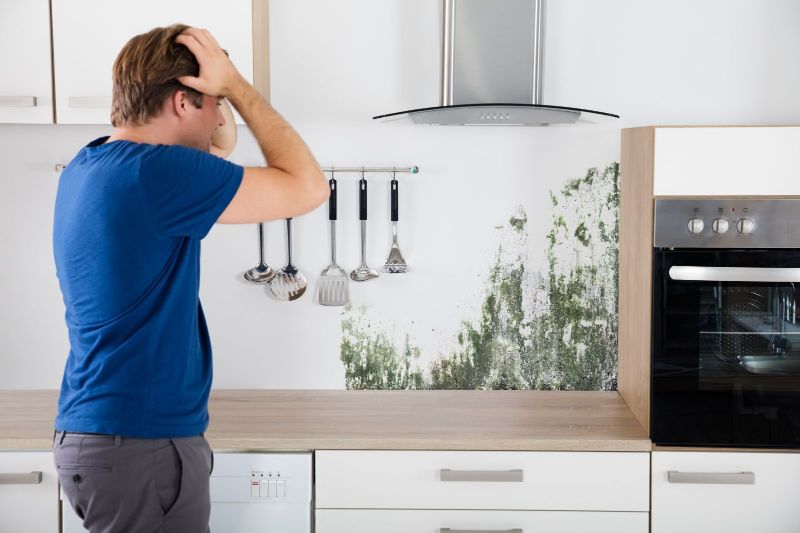Mold is a silent intruder that can wreak havoc on your home and health. While it often remains hidden, its effects can be widespread and costly to remediate. The key to preventing mold damage is early detection. In this article, we will explore the risks associated with mold in homes and provide valuable insights on how to detect and address this insidious problem before it becomes a major issue.
Understanding Mold
Mold is a type of fungus that thrives in damp and humid environments. It reproduces by producing spores, which can become airborne and settle on surfaces throughout your home. Mold can grow on various materials, including wood, drywall, carpet, and insulation. When left unchecked, it can lead to structural damage and have serious health implications for the occupants.
Health Risks
Mold can cause a range of health problems, particularly for individuals with allergies or asthma. Common symptoms of mold exposure include coughing, sneezing, nasal congestion, throat irritation, skin rashes, and eye irritation. In some cases, exposure to mold can lead to more severe health issues, such as respiratory problems and chronic sinus infections. Individuals with compromised immune systems are particularly vulnerable to mold-related health concerns.
Indicators of Mold Growth
Detecting mold in your home can be challenging, as it often grows in hidden or less accessible areas. However, there are several signs that may indicate the presence of mold:
- Visible Growth: The most obvious sign is the presence of visible mold growth. It can appear as discolored patches on walls, ceilings, or other surfaces. Mold comes in various colors, including black, green, and white.
- Musty Odor: A strong, musty odor is often an early warning sign of mold growth. If you notice this smell, it's essential to investigate the source.
- Water Damage: Areas that have experienced water damage, such as leaks or flooding, are more susceptible to mold growth. Mold can start to develop within 24-48 hours of water exposure.
- Condensation: Excessive condensation on windows or other surfaces can create a conducive environment for mold growth.
- Allergy Symptoms: If you or your family members experience unexplained allergy symptoms that improve when you leave the home, it could be a sign of mold exposure.
Detection and Prevention
Early detection is crucial in preventing mold damage. Regular inspection of your home and taking proactive measures can help reduce the risk of mold growth:
- Inspect Vulnerable Areas: Regularly check areas prone to moisture, such as bathrooms, kitchens, basements, and crawl spaces. Look for any signs of water leaks, dampness, or visible mold growth.
- Control Humidity: Maintaining indoor humidity levels below 60% can inhibit mold growth. Dehumidifiers and proper ventilation are effective tools for controlling humidity.
- Promptly Address Water Damage: If your home experiences water damage, address it promptly. Thoroughly dry affected areas, and consider consulting professionals if the damage is extensive.
- Proper Ventilation: Ensure proper ventilation in areas like bathrooms, kitchens, and attics to reduce humidity levels.
- Use Mold-Resistant Materials: When renovating or building, consider using mold-resistant materials to reduce the risk of mold growth.
- Regular Cleaning: Routinely clean and maintain your home. Dust and vacuum to reduce the accumulation of mold spores.
- Professional Inspection: If you suspect mold but cannot locate it, consider hiring a professional mold inspector. They have the expertise and tools to detect hidden mold.
Remediation
If you discover mold in your home, it's essential to take immediate action to prevent further damage and health risks. Mold remediation involves removing the existing mold and addressing the conditions that fostered its growth. It is often a complex and delicate process that should be handled by trained professionals. DIY attempts can sometimes worsen the problem by spreading mold spores.
Mold damage is a serious concern for homeowners, posing both health risks and potential financial burdens. Early detection and prevention are the keys to mitigating these risks. Regular inspection, maintaining a dry environment, and addressing water damage promptly are crucial steps in keeping your home mold-free.
If you suspect mold in your home or have concerns about its presence, do not hesitate to seek professional help. Mold damage detection and remediation are specialized tasks that require expertise and proper equipment. By taking proactive measures and staying vigilant, you can protect your home and your family from the hidden menace of mold.

